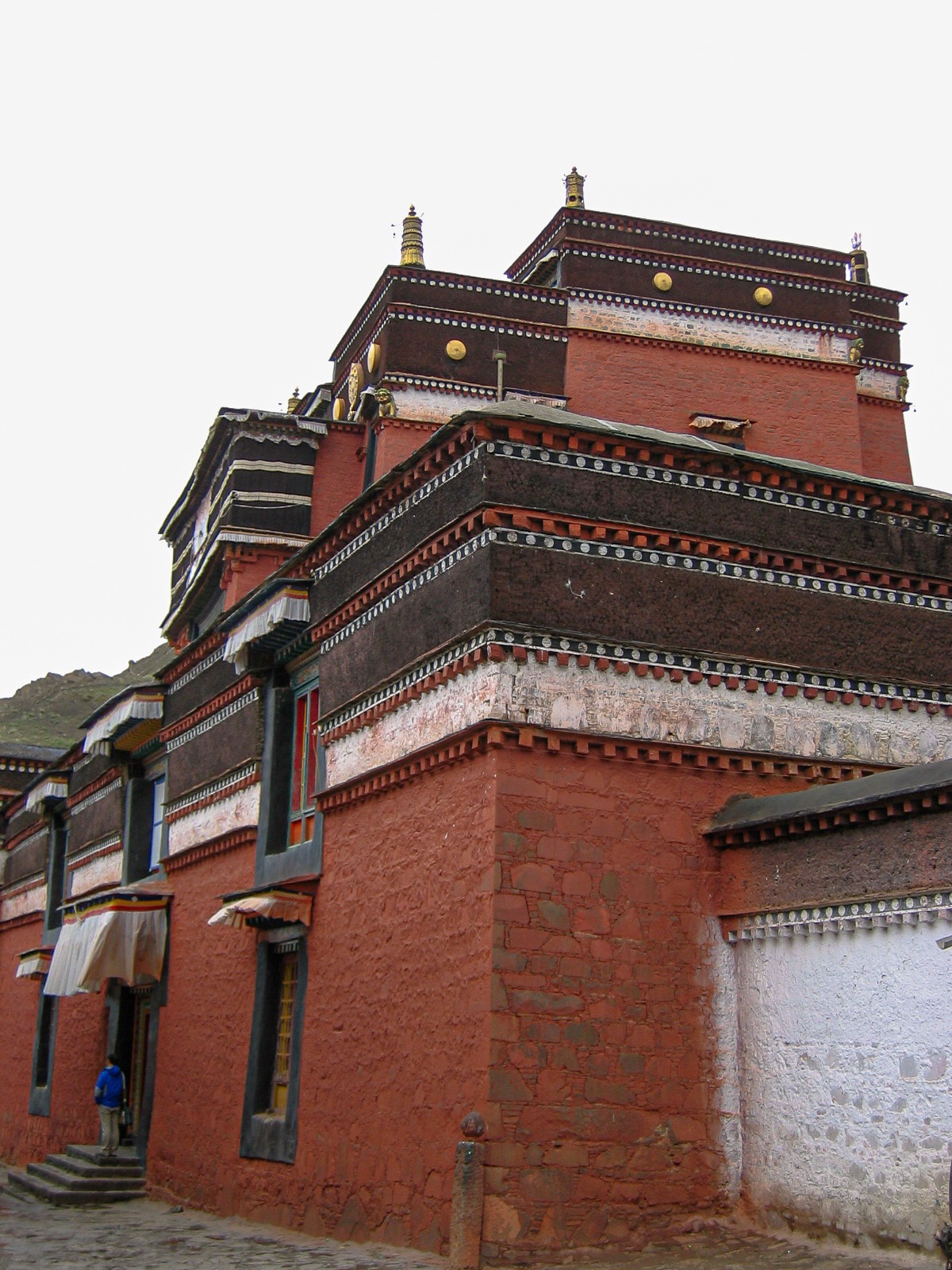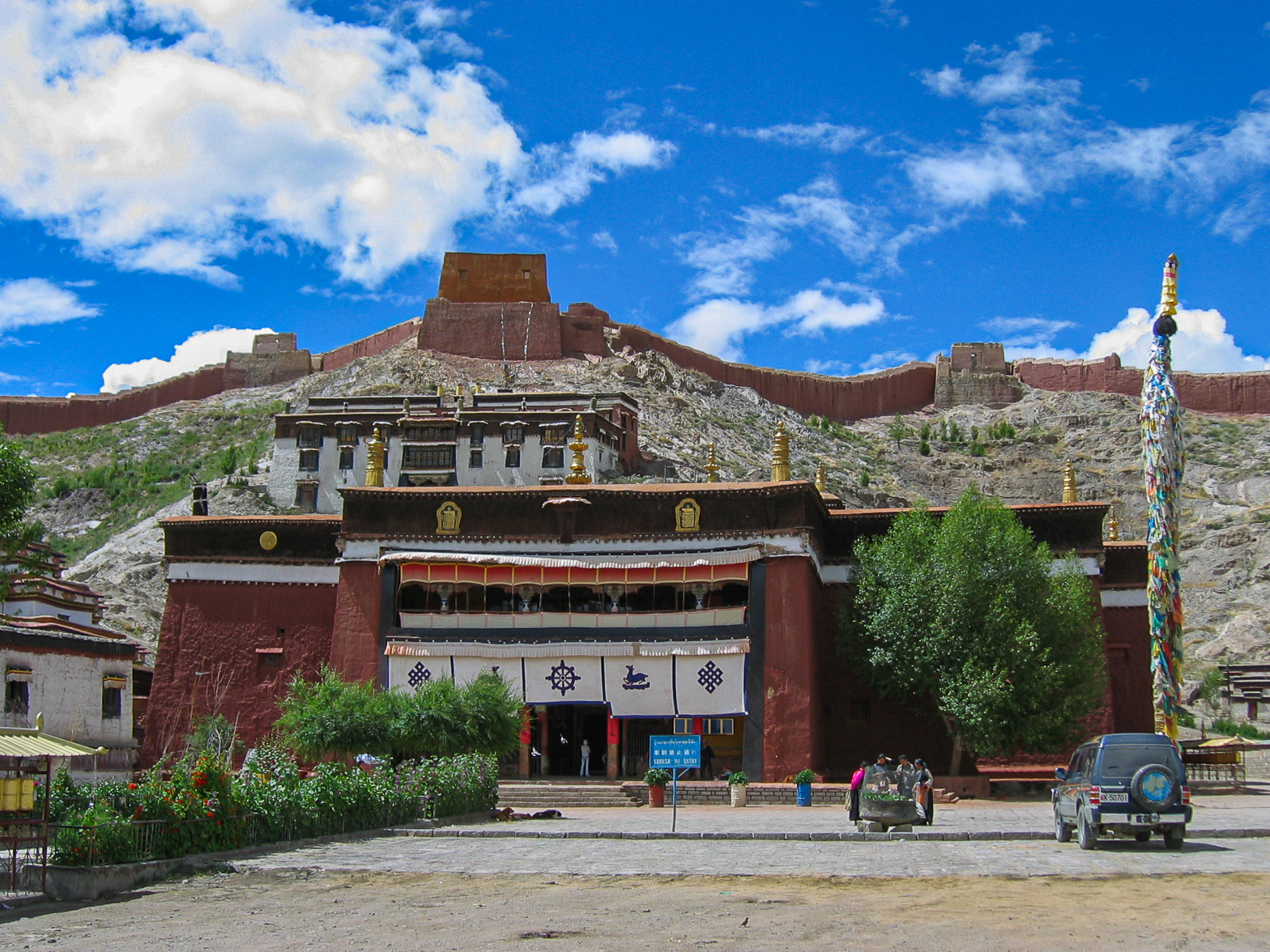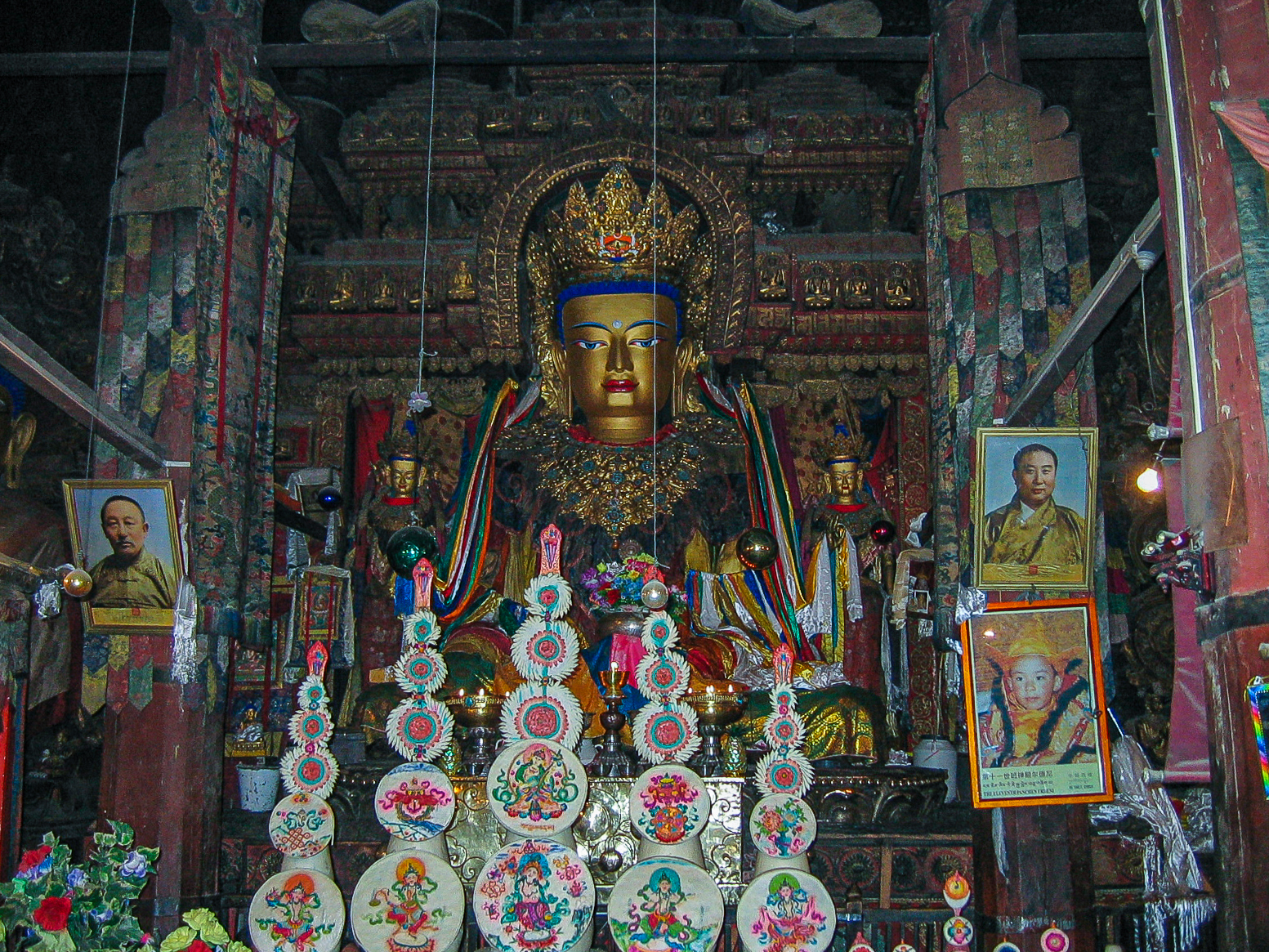Kathmandu to Lhasa Overland – Day 4
Kathmandu to Lhasa overland – Day 4. The day’s focus was to explore one of Tibet’s most important monasteries, Tashilhunpo, and then a three-hour drive to Gyantse to visit the Kumbum (a concentration of chapels spread over several stories) of Palcho Monastery.
Buddhism
Siddhartha Gautama (Buddha) founded the Buddhist faith more than 2500 years ago in India. The Buddhist Faith has three main branches or schools. In order from largest to smallest population, they are: Mahayana, Theravada (the oldest form), and Vajrayana (which evolved out of Mahayana). Vajrayana Buddhism is the form practised in Tibet.
Buddhist teachings are based on The Four Noble Truths. In simple terms, they are: suffering exists, it has a cause, it has an end, and it has a path to bring about its end. The Four Noble Truths show the way to end suffering through the Noble Eightfold Path (Theravada) or the parallel Six Perfections (Mahayana and Vajrayana). All three schools believe in The Four Noble Truths but differ in the way they follow the path to bring an end to suffering.
The Six Perfections
Generosity and Moral Conduct
Forbearance
Diligence
Contemplation
Wisdom
The Noble Eightfold Path
Right Speech/Conduct/Livelihood
(State of mind) Right Effort
(Words and actions) Right Effort
Right Mindfulness and Right Concentration
Right View and Right Thought
(A good source for more information is World History Encyclopaedia)
Tibetan Buddhism
Tibetan Buddhism has four main sects. They follow the same teachings but with different emphasis. From oldest to newest, they are: Nyingma, Kagyu, Sakya, and Gelug.
Perhaps, the two most widely known Tibetans are the Dalai Lama and the Panchen Lama. They are the most important of Tibet’s religious leaders, and are both of the Gelug Sect (yellow hat).
Xigatse – Tashilhunpo Monastery
We were already staying on the outskirts of Tibet’s second largest city, Xigatse, and home to Tashilhunpo Monastery. Founded in 1447, and the seat of the Panchen Lama, it is one of the most important sites in Tibet. Tashilhunpo is one of the few Tibetan monasteries that remained largely untouched during the Cultural Revolution.
The Chinese authorities abducted the current Panchen Lama in 1995, when he was 6 years old. They placed their own selected Panchen Lama as head of Tashilhunpo (click here for more information).
It was a privilege to see Tibetans passing through the complex turning their prayer wheels and enjoying the freedom to celebrate their religion knowing that they had suffered decades of suppression during and after the Cultural Revolution.






Xigatse to Gyantse



Gyantse
Later that day we arrived in Gyantse, the third city of Tibet, famed for the great Kumbum, a spectacular chorten within the grounds of the Palcho Monastery. Unlike the tranquility of Tashihlunpo, the practice and celebration of Buddhism seemed frenetic. The Kumbum, the monastery, the statues, and the views to the great fort made this a most memorable and impressive place to visit.















